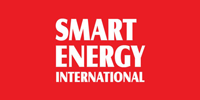
Construction has begun on the Chisholm Grid battery energy storage system, the largest standalone battery energy storage project currently under construction in the US outside of California. Located in Fort Worth, Texas, Chisholm Grid will have an initial rated capacity of 100 megawatts (MWac) and is scheduled to begin commercial operations in mid-2021.
The Chisholm Grid battery energy storage system was developed by Able Grid Infrastructure Holdings, LLC, a joint venture between Able Grid and MAP. Able Grid will provide construction management and operational asset management services for the site. Chisholm Grid is owned by Astral Electricity, LLC, a privately-held energy storage power producer.
In early August, Astral issued full notice to proceed to Mortenson and work has already begun onsite for the balance of plant and high voltage transmission components, making Chisholm Grid the largest standalone battery energy storage project currently under construction in the US outside of California.
At peak construction, approximately 50 people will be employed on-site at Chisholm Grid, and Mortenson has secured subcontracts from local Dallas – Fort Worth-based trade partners to ensure local participation on the project.
read more










